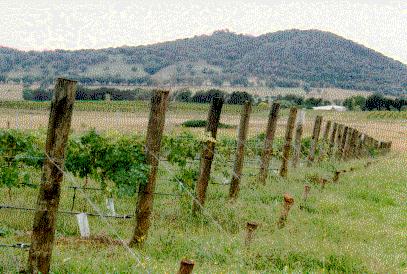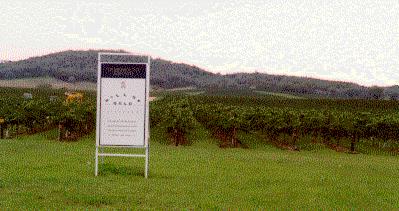
| Hills of gold: wine country touring in Mudgee, NSW |
Everyone has heard of the Hunter Valley, but by comparison Mudgee is positively obscure. The two regions, separated by the Great Dividing Range, have completely different characters. The Hunter Valley is bustling with wineries, restaurants and self-promoting, larger-than-life characters. Mudgee is quiet, has a rural feel, and in general the vignerons tend to be a bit humbler. It's also probably a better place to grow grapes than the Hunter: although it is hot, the summer temperatures are tempered by the altitude (about 500 m), and because it is much drier, the harvest is rarely interrupted by rain, a perennial problem in the Hunter. Because of Mudgee's low profile, until fairly recently only a smallish proportion of the grapes grown here ended up in bottles with 'Mudgee' on the label. Instead, they were used to beef up the production in the Hunter, where the tourist traffic and international fame of the region meant that higher prices could be obtained for the wines. In recent years, however, Mudgee's star has been in the ascendant, and it is gaining a substantial reputation for its bold, earthy flavoured reds. This has led to a mini-revival in the region, with more and more Mudgee grapes being bottled with their origin proudly displayed on the label. Indeed, Rosemount of the lower Hunter have recently achieved international celebrity status for the stunning Mountain Blue Shiraz Cabernet, a Mudgee wine of thrilling concentration and character. This is simply one of Australia's finest wines. Not far behind are their Cabernet and Shiraz from the Hill of Gold vineyard (also in Mudgee), which are almost as impressive and significantly cheaper than their big brother. Other top-quality producers have steadily been working away, producing excellent wines at extremely fair prices: these include Huntington Estate, Miramar, Thistle Hill, Botobolar and Montrose. In this area, scene of a gold rush in the 1870s, wine is the new gold. When I visited, though (vintage time 2000), an air of depression was hanging over the region. According to Ian MacRae of Miramar, this was the worst vintage in living memory (he's been running a winery here since 1975). This year the tables had been turned: while the Hunter vignerons had picked their grapes before the rains, Mudgee had just experienced two weeks of solid rain right at harvest time. This is unheard of in Mudgee, where in March you can pretty much guarantee warm, sunny weather. Instead the weather was really crappy: grey skies, constant drizzle, and winter temperatures. At Thistle Hill, they had already lost the entire Riesling crop, and were sweating on the reds. At Rosemount, they were trying to harvest what they could from the Hill of Gold vineyard, and at Botobolar the bloated grapes hung heavy from the sodden vines. The overall verdict was that even if it was going to be possible to harvest any grapes, the quality would be pretty poor: 2000 truly was a disastrous vintage in Mudgee. But even in the constant rain, Mudgee is an appealing place to visit. Set in the Cudgegong Valley, surrounded by a ring of gently sloping hills, Mudgee is an attractive small town with a bit of a sleepy feel to it. And despite their obvious despair with the lost vintage, the vignerons were all friendly and welcoming. Most importantly, the red wines in particular were quite special, with deep, earthy fruit and firm, dusty tannins: regional characters that seem to transcend the grape variety used and wine making techniques. It has to be said, these wines also represent excellent value for money. For those visiting wine country in New South Wales, the detour over the dividing range to Mudgee is well worth the effort after you have had enough of the hype and bustle of the Hunter. Reports on the leading wineries
|

